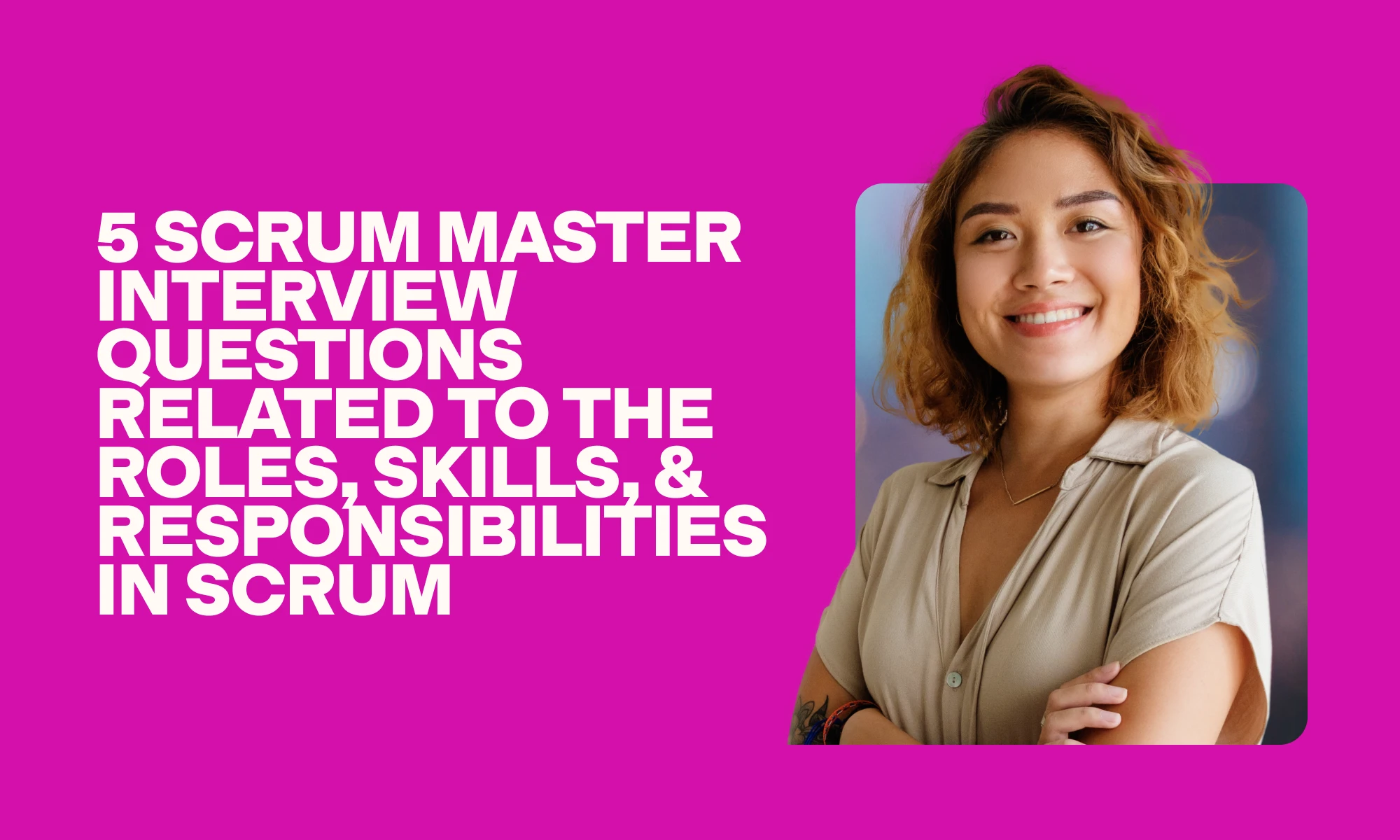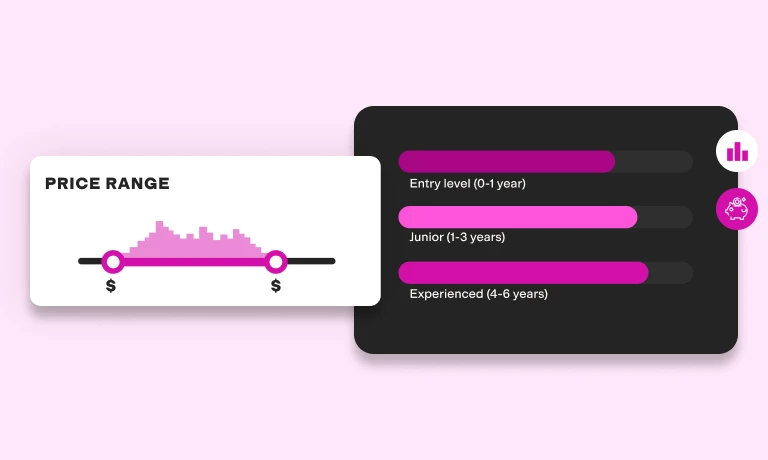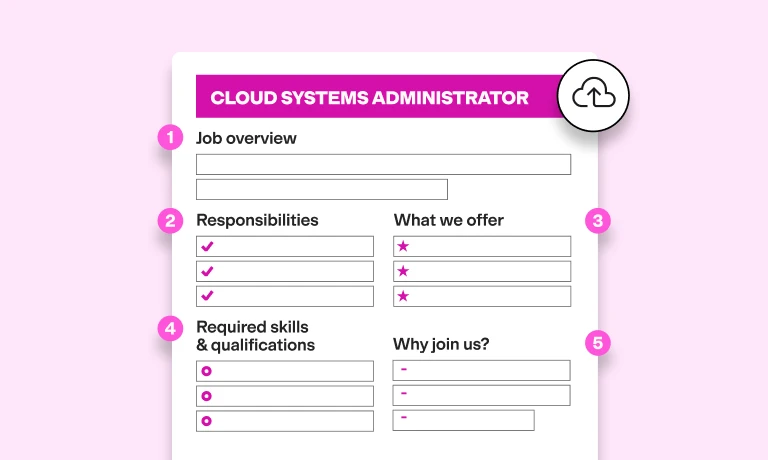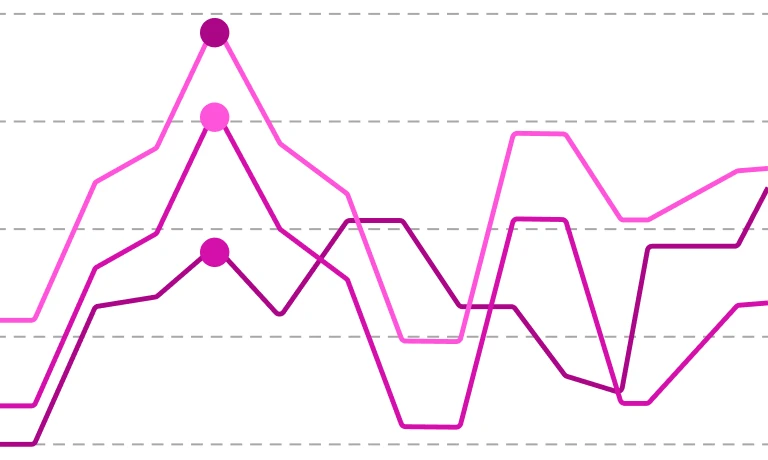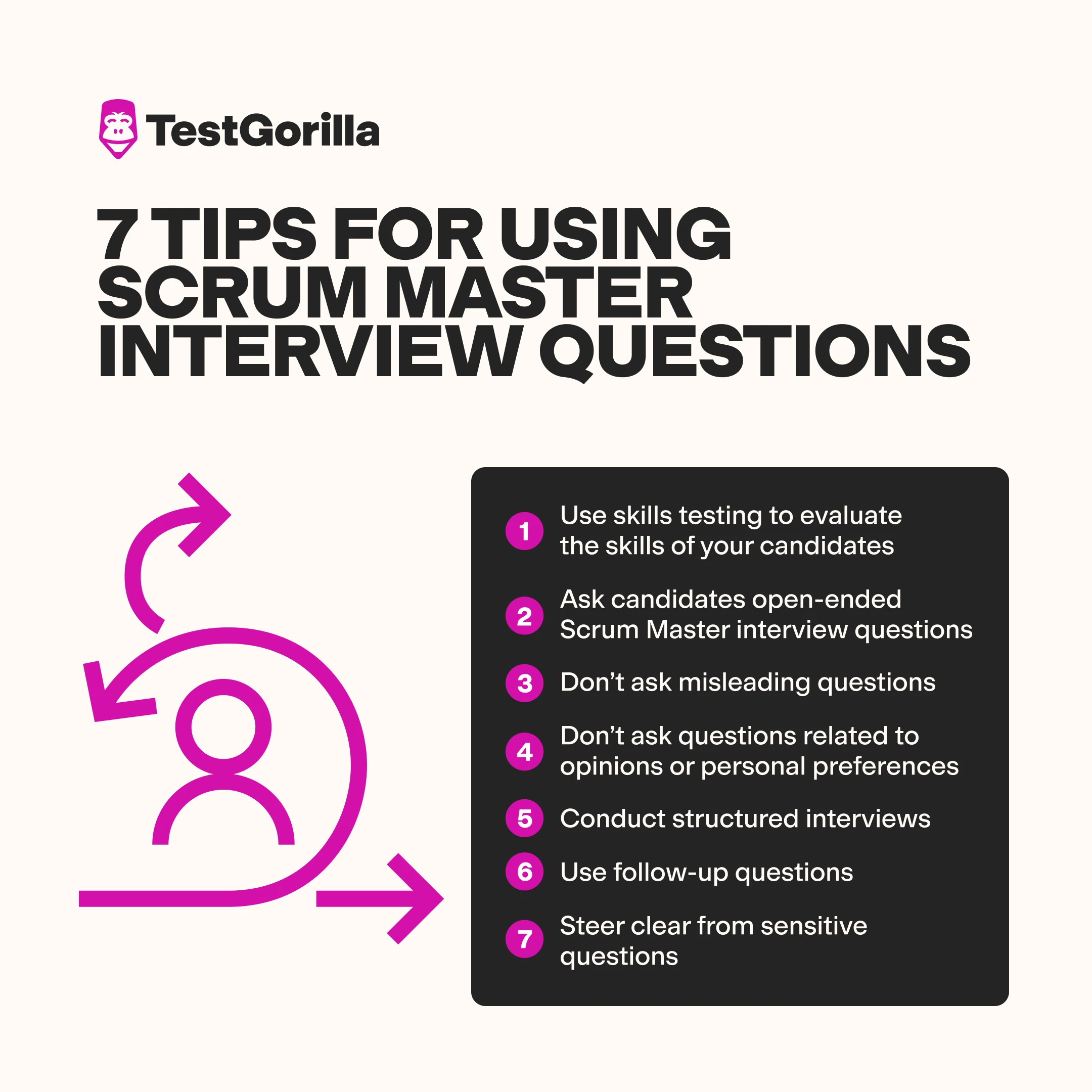The right Scrum Master can ensure that your software development projects run like clockwork, and help bring your organization’s software to the next level.
But hiring one is not an easy feat.
You’ll need to accurately evaluate their Scrum Master skills and knowledge in a multi-step hiring process.
To do this successfully, you’ll need to use the right combination of hiring tools and methods, such as a pre-employment skills assessment including a Scrum Master test, as well as a structured interview with the right set of questions.
Inviting your candidates to an interview isn’t the tricky part. Neither is requesting candidates to complete a skills test or assessment. Coming up with the right interview questions, though, might require some extra thought.
If you’re struggling to come up with the right interview questions that will thoroughly test your Scrum Master candidates’ skills and enhance the candidate experience, look no further.
The following 32 Scrum Master interview questions are just what you need!
We’ve also included sample answers for each question, to help you assess your candidates’ knowledge even if you’re not a Scrum expert yourself.
Table of contents
- 5 Scrum Master interview questions related to the roles, skills, and responsibilities in Scrum
- 18 Scrum Master interview questions related to key Scrum concepts and definitions
- 2 Scrum interview questions related to risks and problems
- 7 Scrum interview questions related to planning, measuring, and assessing
- 7 tips for using Scrum Master interview questions
- Prepare your list of Scrum Master interview questions to hire top talent
5 Scrum Master interview questions related to the roles, skills, and responsibilities in Scrum
Take a look at these first five Scrum Master interview questions which you can use to evaluate your candidates’ knowledge of the different roles, skills, and responsibilities related to Scrum.
1. What are the different roles in Scrum? Can you outline their key responsibilities?
Sample answer:
Three key roles in Scrum include:
The product owner: The product owner’s role involves establishing the product’s features and helping create a roadmap for their implementation. For this, the product owner will list the features and work on their prioritization for each Sprint.
The Scrum team members: The Scrum team’s role involves carrying out the different tasks defined by the product owner, in alignment with the stakeholders’ needs.
The Scrum master: The Scrum Master assists and guides the Scrum team in their work, enhances business value of the product, and facilitates its delivery.
2. Which are the skills a Scrum Master needs to be successful?
Sample answer:
Scrum Masters must have a few essential skills for this role, including:
Exceptional organizational and time management skills
Excellent communication skills
Deep knowledge of the technology that the team uses
Coaching and leadership skills
Deep understanding of the Scrum and Agile frameworks
3. Can you describe some specific duties for which the Scrum team is responsible?
Sample answer:
A self-organizing Scrum team is typically made up of a maximum of seven developers and is responsible for:
Breaking down requirements into small, specific tasks
Developing the product and its features
Communicating about their progress
Working together to deliver a software product
4. Can you describe some specific duties for which the Scrum Master is responsible?
Sample answer:
The Scrum Master is responsible for endorsing and using the Scrum methodology in their team. They must understand why Scrum is essential, make sure their team uses the Scrum and Agile frameworks and help get rid of any bottlenecks that prevent the team from making progress.
5. Can you name some specific duties of product owners?
Sample answer:
Product owners have several responsibilities. In addition to establishing what the end concept and the vision of the project should be, they must also:
Be aware of the customer needs
Gauge the progress made on the project
Be a liaison and intermediary for questions related to the project
18 Scrum Master interview questions related to key Scrum concepts and definitions
Here are 18 Scrum Master interview questions you can use to test your candidates’ knowledge of several crucial Scrum concepts and definitions.
1. Explain what Scrum is.
Sample answer:
Scrum is classed as an Agile framework that makes it easier for members of developer teams to work alongside each other. Scrum has several benefits, as it:
Speeds up product releases
Improves code quality
Helps teams implement change requests faster than with other methodologies
Additionally, not only can team members share what they have learned to help others, but they can also self-organize and enhance their productivity significantly.
2. What is the difference between Scrum and Agile?
Sample answer:
Agile is best used for small teams of professionals or experts, Scrum is suited to teams working on projects where requirements are changing frequently.
In Agile, development and testing are continuously iterated. Scrum is a process within Agile that aims to quickly enhance the business value of the product.
3. What is meant by DoD, and how is it useful?
Sample answer:
DoD means “definition of done.” It is used to describe all deliverables that must be achieved to classify the product increment as releasable.
Since DoD enables developer teams to receive feedback on the product, it’s helpful in enhancing planning and completing work that hasn’t been done in specific Sprints.
4. Explain the difference between a user story, an epic, and a task.
Sample answer:
Whereas user stories outline the requirements of the business from the perspective of the end user, epics are best described as a collection of several linked user stories, and tasks help break user stories down. Tasks are used to track work in Scrum, and typically only a few people work on each task.
5. How would you define empirical process control in Scrum?
Sample answer:
Empirical process control describes work that combines facts and evidence, or experimentation and observations to achieve a goal.
In Scrum, teams use empirical process control to progress with a project; alternatively, they use facts and observations when an activity is too complex for a defined process control approach.
6. How long is a Sprint?
Sample answer:
One of the Scrum rules stipulates that Sprints shouldn’t exceed a month. They usually last between one and four weeks, during which the Scrum team will work towards the Sprint goal.
A shorter Sprint works best because the team can get feedback on their work faster, whereas a longer Sprint helps the team deliver substantial chunks of work within the allotted time frame.
7. Can you explain what artifacts are in the Scrum process?
Sample answer:
There are three main artifacts in the Scrum process:
Product increments combine all of the backlog items carried out in each Sprint compared with increments of the previous Sprint
The product backlog is a list that contains any changes that have happened to features, any bug fixes or infrastructural changes, and any new features
The Sprint backlog comprises the goal, backlog items, and increments of the Sprint, and is updated regularly
8. Can you explain what a Sprint is?
Sample answer:
In Scrum, Sprints are timeboxed phases where developers work towards building a product. A Sprint helps divide the time to complete large projects into smaller, more manageable goals.
9. In a Sprint, what is meant by velocity?
Sample answer:
The velocity metric helps teams measure how much work they have completed in each Sprint. This also helps teams assess how much work they can do in each Sprint.
Velocity is calculated by adding all story points taken from each Sprint and dividing this value by the total Sprints.
10. What is the difference between Sprint backlogs and product backlogs?
Sample answer:
A Sprint backlog features several items in a list that must be completed in a Sprint. The list is obtained from the product owner. A product backlog features several items in a list that must be completed to develop the product. This list is obtained from the customer.
11. What are daily stand-ups? Can you explain what happens in a daily stand-up?
Sample answer:
A daily stand-up is best described as a discussion that happens each day. They help ensure that the team is aware of:
The tasks that were successfully completed
The tasks that still need to be completed
The challenges that need to be overcome
12. Describe what Scrum-ban is.
Sample answer:
Scrum-ban is a methodology that combines Scrum and Kanban. It’s used to reduce batching and help the team use a system that is pull-based. In the Scrum-ban project management framework, Kanban is used alongside Scrum to help the team accomplish tasks.
13. Can you explain what a spike is?
Sample answer:
All tasks that use XP (extreme programming) are part of a spike. Spikes might involve carrying out research and design. Their purpose is to minimize technical risks and are also known as user stories that are timeboxed. They also help team members acquire the necessary information to complete a project.
14. Can you explain what Sprint 0 is?
Sample answer:
In Sprint 0, teams produce a rough outline for the backlog of the product. It gives team members an idea of the scope of the work they will need to complete and ensures they organize and prepare themselves for the work ahead.
15. Explain what MVP means.
Sample answer:
The acronym MVP means minimum viable product. It’s used in lean start-ups to emphasize the importance of combining learning and product development. Teams tend to gather critical data on how users use the product, which helps them develop a deeper insight into the needs of the customer.
16. Explain what MMP means.
Sample answer:
The acronym MMP means minimal marketable product. It is used to describe the product that has developed adequately to be released as version 1. Having defined the MMP means that your organization and teams are already aware of the target end users, their needs, and the problems that your product will need to solve at this stage.
17. Can you explain what a user story is?
Sample answer:
User stories are tools used in Agile project management to help other team members understand how the end user will gain value from the work done, where the end user might be an internal or external customer or a colleague.
To record a user story, organizations use project management software tools or index cards. This helps teams achieve their goals, which are broken down into initiatives and epics.
18. What is a Sprint retrospective?
Sample answer:
Sprint retrospectives occur once the Sprint review has happened, and is essentially a meeting during which errors and issues are discussed. In Sprint retrospectives, team members also discuss new approaches to manage issues, which are brought forward to the new Sprint.
The best insights on HR and recruitment, delivered to your inbox.
Biweekly updates. No spam. Unsubscribe any time.
2 Scrum interview questions related to risks and problems
Are your candidates aware of the main problems that can occur in Scrum?
The following two Scrum interview questions will help you evaluate their knowledge on Scrum risks.
1. Which risks are encountered in Scrum? Could you name a few?
Sample answer:
Some of the risks that teams encounter in Scrum include:
Going above the allotted budget
Failing to meet the project deadline
Having non-specific or vague user stories
Lacking the right resources in the team
2. What is scope creep and which approaches would you use to manage it?
Sample answer:
In some situations, changes might be added to the project without a proper assessment of the impact they have on the cost of the project or the duration of the Sprint. Scope creep should be avoided, so there are several steps required to manage it:
Work should be monitored closely every day
The vision of the project should be explained to the team
Changes must be requested, negotiated, assessed, and approved
scrum-interview-questions-planning-measuring-assessing
7 Scrum interview questions related to planning, measuring, and assessing
This section contains seven Scrum interview questions that you can use to evaluate your candidates’ planning, measuring, and assessing knowledge and learn how knowledgeable they are as servant leaders.
1. Can you explain what user story mapping is?
Sample answer:
User story mapping is a process that involves organizing and presenting user stories to help teams understand the system backlog and the planning of releases.
Along the horizontal axis of the story map, the user stories are ordered by order of priority, and along the vertical axis, they’re presented according to their level of sophistication.
2. Can you explain what a burnup chart is in simple terms?
Sample answer:
The burnup tool is used to monitor how much work has been completed. It also shows the pending work that’s due in a Sprint or a project. In this sense, they are helpful for visualizing the work that is due to be completed.
3. Can you explain what a burndown chart is in simple terms?
Sample answer:
The burndown chart is used to monitor how quickly user stories are being worked through by the developer team.
This Agile tool sums up features from the perspective of the end user and can be viewed by the whole team. It also features the jobs that need to be completed, which is plotted against the duration of time that has elapsed from the beginning of the project.
4. What are some strategies for achieving cross-team coordination? Can you outline how these are used in Scrum?
Sample answer:
To achieve cross-team coordination, using a Scrum of Scrums meeting is recommended. In these meetings, the Scrum teams talk about the progress made, as well as the issues and risks of a project. The Scrum Master would lead their team and bear the responsibility of coordinating with other Scrums.
5. Can you describe some processes that Scrum Masters use for tracking sprint progress?
Sample answer:
As monitoring the progress of Sprints is important, Scrum Masters must use several approaches to track the progress made, such as to:
Analyze the team velocity
Plan Sprints
Carry out Scrum retrospectives
Hold daily Scrum meetings
Analyze the burndown chart
6. Why are daily Scrums vital? What do they achieve?
Sample answer:
There are several reasons why daily Scrums are essential:
They make collaboration easier
Help teams discuss and visualize the progress made
Enhance the level of control over the project
Help teams minimize the risks of project failure
Lead to better quality work
7. Why is Sprint planning important? What does it achieve?
Sample answer:
Sprint planning is essential for outlining the work that needs to be carried out in the Sprint. Some of the topics that are addressed in Sprint planning include:
Why the Sprint is important
What work can be done during the Sprint
How the work will be completed
7 tips for using Scrum Master interview questions
Once you reach the interview stage, there are a few best practices to be aware of. Here’s a quick list:
1.Use skills testing to evaluate the skills of your candidates
Prepare a list of the critical technical skills, traits, or experiences that the successful Scrum Master candidate should have, and evaluate your candidates’ skills using skills assessments before you invite them to an interview.
For example, you can use a Scrum Master test in combination with other role-specific skills tests, programming skills tests, or personality and culture assessments, to identify the candidates who have the strongest performance potential.
Skills assessments allow you to instantly see who your best candidates are, and reduce the time to hire significantly.
2. Ask candidates open-ended Scrum Master interview questions
If you ask open questions, your candidates are more likely to respond with detailed answers. Avoid closed-ended questions, which might elicit simple “yes” or “no” responses, and invite candidates to share as much detail as possible within your time constraints.
3. Don’t ask misleading questions
If you choose to ask candidates a question such as “Is your team satisfied with your leadership as a servant leader/Scrum Master?” it’s likely that you’ll receive dishonest responses.
Misleading questions can also have a negative impact on the candidate experience and leave candidates with a bad impression of your organization.
4. Don’t ask questions related to opinions or personal preferences
Instead of asking, “Do you like your current Scrum Master role?”, use an open question in which you aren’t asking your candidate about their subjective opinion.
For instance, you might ask, “Which factors make your current role challenging?”, and then ask a follow-up question such as “How would you approach these challenges as a Scrum Master in our organization?” to delve deeper into your candidates’ ability to adapt to their potential new role.
5. Conduct structured interviews
Although you might decide to ask these Scrum Master interview questions in any order, use structured interviewing to pinpoint job skills that are essential to the position. If you don’t use the same order with each applicant, try to address all the planned questions.
6. Use follow-up questions
Ask follow-up questions if your candidates haven’t provided enough details in response to the initial question.
Follow-up questions might relate to the projects that your candidates are currently in charge of. Below, you can find some examples:
How did you contribute to this?
What was your role in this project?
What was the outcome?
Why did you choose to take this action?
What led you to make this decision?
Could you explain a little more about this?
Do you have any other examples of this?
7. Steer clear from sensitive questions
There are some questions and statements that must be avoided in an interview due to legal issues that can arise. Never ask candidates questions such as:
In which country were you born?
In which year did you receive your computer programming degree?
How old were you when you began your Scrum Master career?
Prepare your list of Scrum Master interview questions to hire top talent
Hiring the right Scrum Master for your organization requires an effective interview process, which in turn requires using the right interview questions.
The process might take some time, but with the questions listed in this article, we hope you’ll find it easier to start planning your own.
Additionally, using a comprehensive skills testing platform to administer skills tests can help you quickly filter out unqualified candidates and only invite your best applicants to an interview.
Give your hiring process a boost and hire the best Scrum Masters to manage your software development projects efficiently. Try TestGorilla for free.
You've scrolled this far
Why not try TestGorilla for free, and see what happens when you put skills first.


